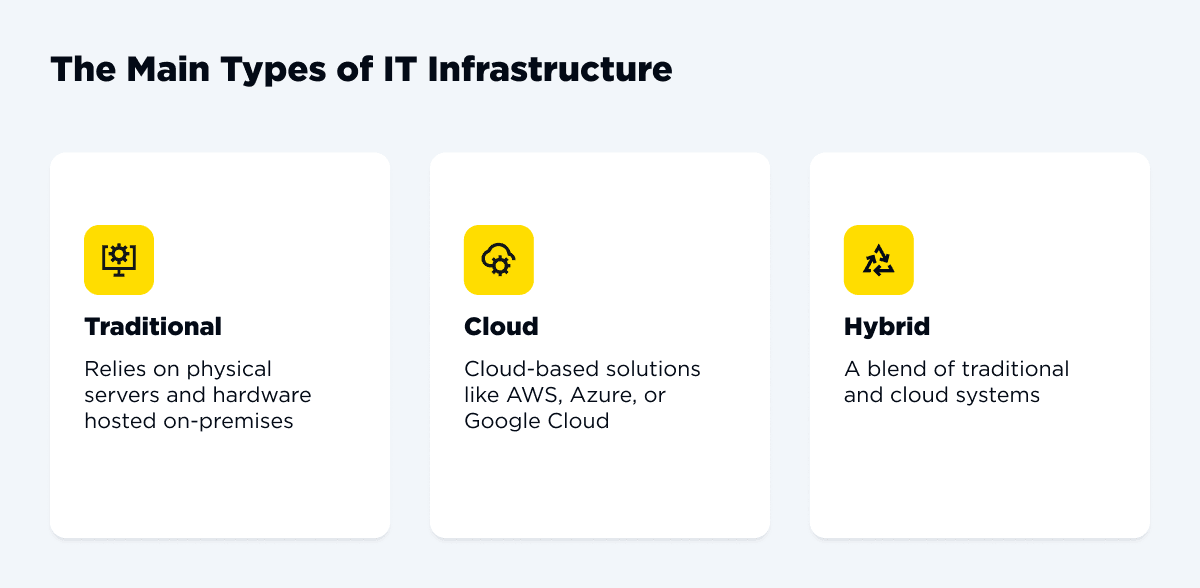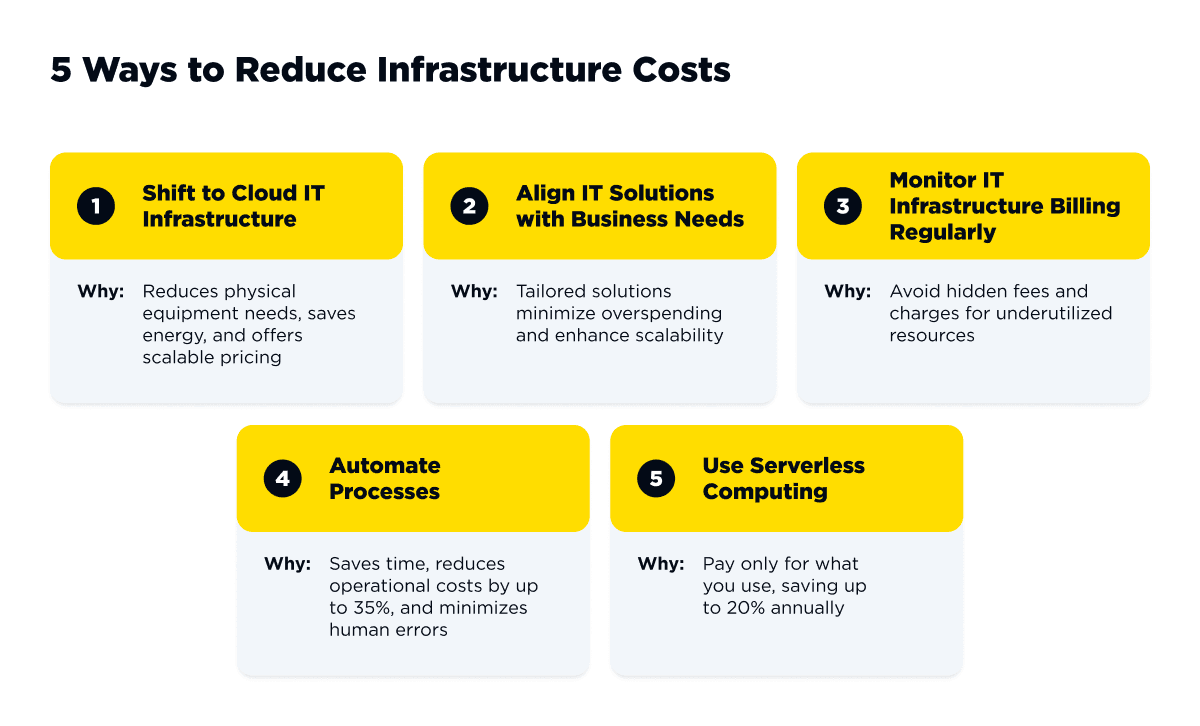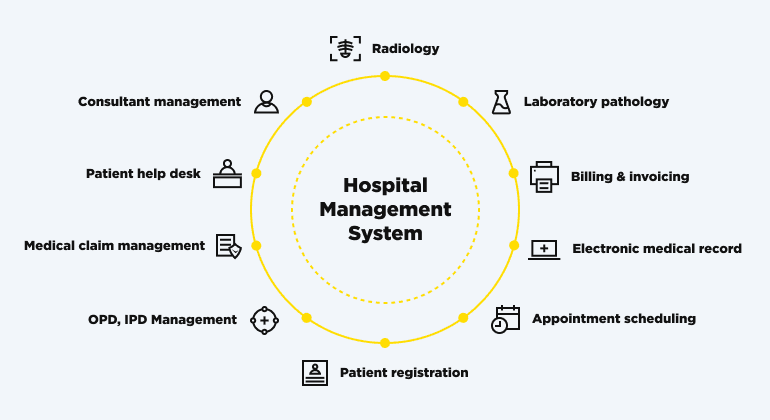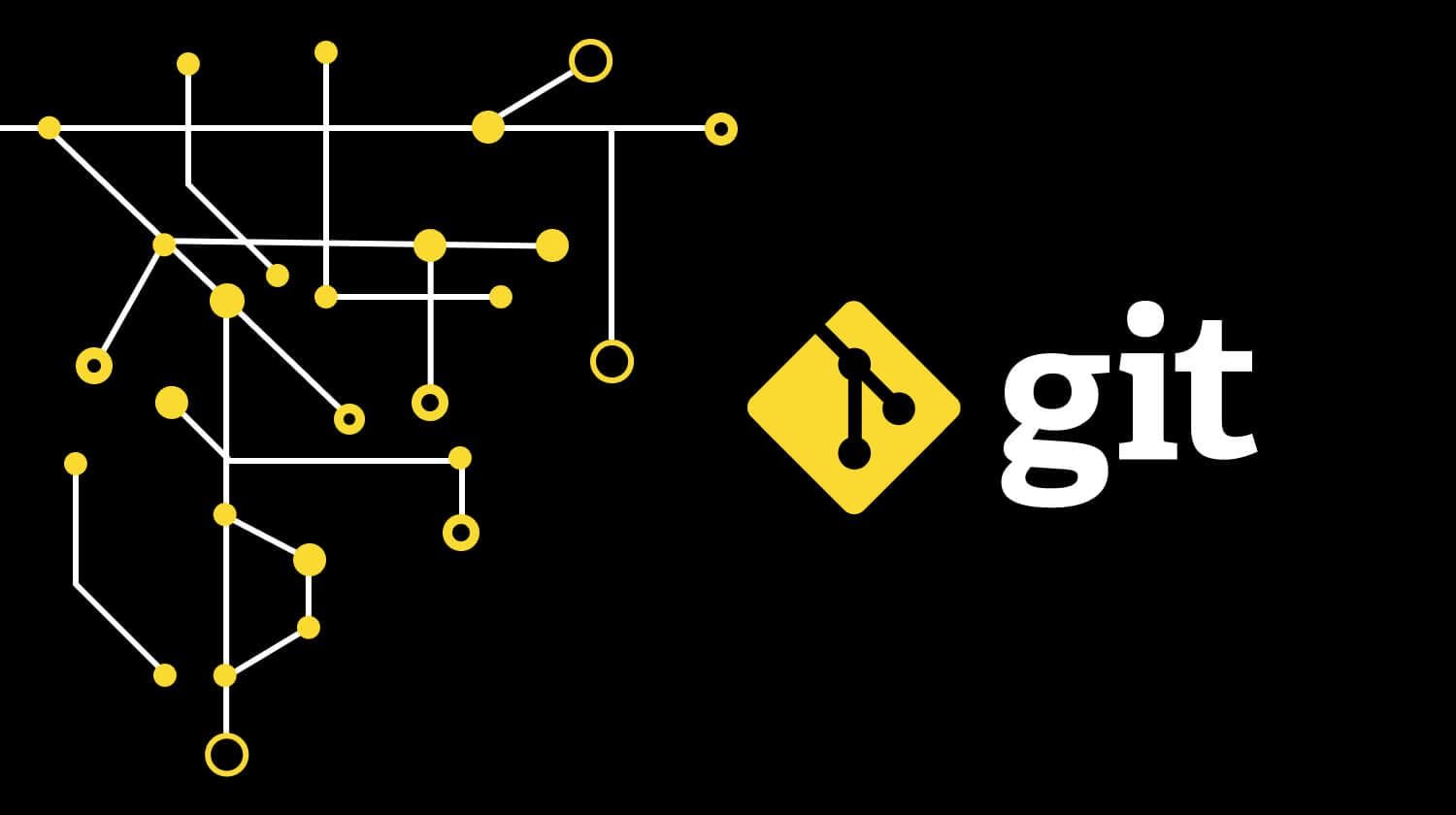The demand for efficient IT infrastructure is growing more and more every year. However, the question is how to optimize its maintenance. This issue arises from the fact that the costs associated with maintaining it are increasing as well. Of course, all businesses strive to stay competitive. As for 2024, optimizing IT infrastructure has become a critical priority. According to the Statista report, the average IT expenses are about 2-4% of the company’s revenue (depending on the size of the business, where small businesses spend about 4% and large companies - about 2%, respectively). For many businesses, this number is too high. And it is not getting lower.

Are you looking for some answers on how to reduce IT infrastructure costs without sacrificing efficiency or innovation? The good news is that we are going to bring forward the types of IT infrastructure, cost implications, and actionable methods to streamline your systems and maximize cost savings in this article.
Defining The Main Types of IT Infrastructure and Their Cost Implications
Before you start reducing IT infrastructure costs, it is crucial to understand the type of it. As soon as you identify your type of IT infrastructure, you can evaluate infrastructure cost breakdown and available options for optimization. In general, your task is to increase cost-efficiency. In this matter, we would like to mention Gartner's 2023 Hype Cycle for Operating Models report, which highlights the importance of updating IT operating models to make the most of new technologies (like cloud services and AI).
Therefore, let’s define the key types of IT infrastructures and their cost implications.

#1 Traditional infrastructure
The most old-fashioned and well-known type relies on physical servers and hardware hosted on-premises. Of course, it’s reliable but expensive. It requires substantial upfront costs and ongoing maintenance costs.
Cost implications included:
#1 Initial investment (capital needed for installing physical servers, storage devices, and networking equipment)
#2 Maintenance and repairs if needed (hardware management requires ongoing costs for its maintenance, upgrades, and eventual replacement of outdated or broken equipment)
#3 Energy consumption (as they are on-premises servers, you are likely to have high electricity bills)
#4 Staffing needs (you definitely need dedicated IT staff to manage and maintain the infrastructure)
#5 Disaster recovery (it is rather costly as it involves extra hardware and secure off-site storage solutions)
#2 Cloud infrastructure
The most popular cloud-based solutions are AWS, Azure, or Google Cloud. They eliminate the need for physical hardware. This way, costs are more flexible and based on a pay-as-you-go model. However, it can rise unexpectedly if utilization isn’t properly monitored.
Cost implications included:
#1 Flexible billing (affordable optimization of IT infrastructure costs due to pay-as-you-go pricing; however, over-provisioning or unexpected usage spikes may lead to unexpected expenses)
#2 Storage and bandwidth costs (a bit unforeseen charges for data storage and transfer can escalate quickly)
#3 Subscription fees (easy to manage, yet cloud providers charge for various services, such as additional security or enhanced support)
#4 Compliance and data security (it might require extra spending to meet legal and regulatory requirements, such as GDPR)
#3 Hybrid infrastructure
It is a blend of traditional and cloud systems. While it offers flexibility and scalability, managing both can lead to even higher operational expenses.
Cost implications included:
#1 Complex infrastructure management cost (you may need both skilled staff and robust infrastructure management to coordinate on-premises and cloud systems, which can drive up expenses)
#2 Interoperability (to ensure seamless integration between traditional and cloud infrastructure components, you need to involve custom development or third-party solutions)
#3 Licensing costs (sometimes, there are duplicated licensing fees because of multiple software solutions)
#4 Data transfer expenses (depending on a provider, you might be charged extra for moving data between on-premises and cloud systems)
As you can see, each type of IT infrastructure has unique cost implications. The most important part is to identify your type, make sure it aligns with your business, and do your best to manage it properly.
Reducing the Cost of IT Infrastructure: 5 Most Efficient Ways
If you’ve reached this far, you’re definitely interested in how to eliminate IT infrastructure costs. We’ve decided to point out the main ways you may carry it through. Let’s explore.

Make a shift to the cloud IT infrastructure
Migrating to the cloud is one of the most effective ways to cut costs. Cloud IT infrastructure solutions reduce the need for physical equipment, save energy, and offer scalable pricing. For instance, using services like Amazon EC2 or Microsoft Azure allows you to adjust financial resources based on demand. For example, Netflix is reported to apply smart technologies for scaling and usage monitoring. It helps them save millions every year as it optimizes their cloud infrastructure usage.
Tip: Always track your resource allocation. You can set up alerts for unused instances or unexpected spikes in usage.
Align your IT Infrastructure solutions with your business needs
Every business is unique, so a one-size-fits-all approach rarely works. As soon as you start conducting regular assessments to match your IT solutions with your current and future needs, you can reduce IT infrastructure costs. You may need to choose a more scalable IT infrastructure if your business has seasonal peaks. For instance, IBM Cloudability enables teams to reduce cloud unit costs by 30% or more.
Tip: Estimate your peak loads to always have scalable solutions yet cost-efficient when the loads are lower.
Conduct regular monitoring of billing of IT infrastructure service
It can be tricky when it comes to cloud billing (hidden fees or charges for underutilized resources, for example). Always review your invoices and infrastructure usage reports to identify inefficiencies. Why is it important? It is because a Flexera 2023 report revealed that 32% of cloud spending is unreasonable due to poor management of resources.
Tip: Make sure to automate billing alerts and set spending limits to avoid any unpleasant surprises. For example, you can use tools like AWS Cost Explorer or Azure’s Cost Management to provide insights into your spending patterns.
Cut down on manual processes
We’ve mentioned that in many articles, and don’t get tired of repeating – automation can save significant time and money. The tools you can adopt include automated deployment, monitoring, and incident management. It not only reduces the workload on your IT team but minimizes human error. You can easily save up to 35% on operational costs.
Tip: With the support of a skilled DevOps team, implementing tools like Ansible, Puppet, or Terraform can automate repetitive tasks. Your team can meanwhile focus on more strategic projects.
Implement the use of serverless computing
Cloud computing solutions include AWS Lambda or Google Cloud Functions. They let you pay only for the exact resources you use. It is a real cost-effective way for businesses, particularly those with variable workloads. When looking closer at expenses, you can save approximately 20% annually when implementing serverless computing.
Tip: Such solutions are especially great for event-driven applications like chatbots or IoT integrations.

Are you ready to take your business to the next level?
Contact usWhat You Should Consider to Outsource to Reduce IT Infrastructure Costs
When searching for ways to lower IT infrastructure costs, you should remember that one of the best ones is outsourcing. It always leads to significant savings, even when you outsource just certain aspects of your IT operations.
Let’s discover what things you should rather outsource to reduce IT infrastructure costs.
#1 Network management
When you outsource a Managed Service Provider (MSP), it can substantially eliminate the need for an in-house team. Moreover, it allows for 24/7 monitoring.
#2 Security
Security should be your number one priority. When you opt for outsourcing cybersecurity to specialized firms, they can guarantee top-notch protection for data and follow all regulatory compliance standards. Therefore, you can avoid investing in expensive in-house expertise.
#3 Software development
It is probably the most popular outsourcing method as the most efficient approach to cost optimization. Collaborating with external teams for software development or maintenance reduces overhead. At the same time, you will get only high-quality results and custom solutions.
#4 Cloud migration
If you want to know how to reduce IT infrastructure costs, transition your IT infrastructure to the cloud. Partnering with an experienced cloud service provider, you can eliminate your dependence on physical servers, reduce energy costs, and reach scalability.
#5 Helpdesk support
It’s been a long-time-established practice to outsource support teams. They can handle customer inquiries efficiently and at a much lower cost. Moreover, it significantly improves response times.
Popular examples of businesses that used outsourcing to minimize costs:
In 2023, Meta outsourced parts of its IT operations, cutting maintenance costs by 15% while improving response times.
Spotify collaborates with external development teams to enhance its app features. The company is able to focus on innovation while maintaining agility and streamlining costs.
A Ukrainian energy company, DTEK, has successfully migrated its SAP environment to AWS. As a result, they received a secure, reliable, and scalable infrastructure. It ensures improved disaster recovery.
IT Infrastructure Costs Optimization With OTAKOYI: Benefits You Get
With our profound expertise and years of experience, we at OTAKOYI clearly understand the challenges businesses face when looking for ways how to minimize IT infrastructure costs. Our dedicated team specializes in providing you with tailored solutions that help you maximize efficiency while optimizing costs. How can we help you?
#1 Cloud migration (involves all stages from planning to execution, ensuring a smooth transition and clarifying cloud costs)
#2 Custom IT solutions (designing infrastructure solutions that align with your specific business requirements and needs to make sure they are scalable and flexible)
#3 Cost monitoring tools (offering advanced analytics and monitoring systems, our team can help you evaluate, track, and manage your IT expenses reasonably)
#4 Automation (top-notch automation strategies we design and implement to streamline operations and reduce your IT infrastructure costs)
We are here to help you unlock the full potential of your IT infrastructure! With our track record of delivering results in reducing costs by up to 40%, our team is ready to provide you with our services that turn cost-saving strategies into reality.
Wrapping up
Last but not least, optimizing IT infrastructure costs is not just about saving money. It’s also about smarter resource management, budget allocation, and strategic planning. When you adopt modern solutions like cloud migration, automation, and outsourcing, you can significantly lower the expenses of your company while boosting efficiency. Choosing OTAKOYI as your partner can transform cost-saving opportunities into real results that scale up your IT infrastructure for future trends.





